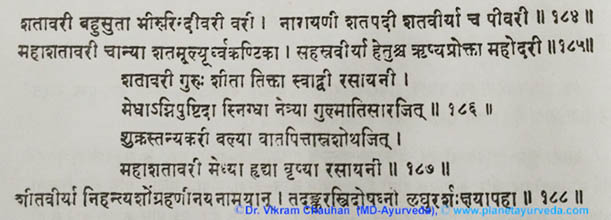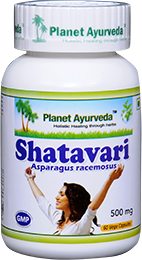Ayurveda for Low Anti-Mullerian Hormone (AMH)
INTRODUCTION

AMH is a glycoprotein hormone which is mainly responsible for growth, differentiation and folliculogenesis process. It is mainly found in the sertoli cells of the male fetus so found in very less quantity in females. In females, it is found in granulosa cells. In males, its main role is to inhibit the formation of female reproductive tract which includes – Fallopian tube, uterus, upper vagina and mullerian ducts.
STRUCTURE
AMH is a dimeric glycoprotein connected by sulfide bridges which are called C-Terminal dimer and D-Terminal dimer. Its molecular weight is 140 kDa.
PATHOLOGY
Inadequate production can result in fertility problem, ovulation problems and delayed puberty in females. In males, if AMH is produced in less quantity, it can result in Persistent Mullerian duct syndrome (P.M.D.S) in which the males have rudimentary uterus and undescended testes.
BLOOD LEVELS OF AMH
AMH is found in very less quantity or may be undetectable in females but in males its levels remain little higher.
IN FEMALES
| Age | Value |
| Younger than 24 months | less than 5 ng/ml |
| 24 months to 12 years | less than 10 ng/ml |
| 13-45 years | 1 to 10 ng/ml |
| More than 45 years | less than 1 ng/ml |
IN MALES
| Age | Value |
| Younger than 24 months | 15 to 500 ng/ml |
| 24 months to 12 years | 7 to 240 ng/ml |
| More than 12 years | 0.7 to 20 ng/ml |
FUNCTIONS OF AMH
- In females – It inhibits the formation of primary follicles in the ovary. It is found in higher quantity during recruitment stage of folliculogenesis. It helps in assessing certain conditions like premature ovarian failure and polycystic ovary syndrome.
- In males – It is mainly responsible for preventing the formation of female reproductive tract and mullerian ducts. AMH levels vary with age and sex.
- Production of sex hormones – AMH is mainly responsible for the production of sex hormones in both sexes. In males, it remains high during the childhood stage but its level declines during puberty and adulthood.
FACTORS INFLUENCING AMH LEVELS
Various factors are responsible for lowering AMH levels, these factors can be:-
- Age – In females, AMH level decreases as the age advances. Fertility and AMH level, they both are interconnected to each other. As AMH level decreases, fertility decreases.
- Certain medical conditions – Some hormonal disorders and certain medical conditions can be associated with low AMH.
- Women with ovarian problem – Females having ovarian cyst or endometriosis have chances of having low AMH levels.
- Stress – Stress plays very important role in the imbalance of hormones. Women with stress have chances of decreased levels of AMH.
- Poor nutrition – Fat rich unhealthy diet can affect the AMH levels.
AMH CLINICAL USAGE
AMH hormone serves various benefits in both sexes like it helps in ovulation, embryogenesis and regulation of sex hormones. Its clinical usage are as follows:-
1. In vitro fertilization – In females, AMH levels mainly tells about female’s remaining egg supply.
- Levels less than or equal to 5.4 pmol/I – Low response to ovarian hyper stimulation.
- Levels greater than or equal to 25.0 pmol/L – High response to ovarian hyper stimulation.
2. Assessment of general fertility – In females, AMH levels are very helpful in assessing the general fertility status. In females with poor fertility who are trying to conceive, it helps in providing us information that either egg freezing is needed or not.
WHAT IS LOW AMH?
In females, AMH level declines as the age advances but in premature loss of fertility its levels can also decline. But in males, level remain higher than the females. Low AMH is an indicator of low ovarian reserve in females.
AYURVEDA FOR LOW AMH
“Vandhyatva” term is used in Ayurveda to explain infertility and low AMH level is a major cause for Infertility now a days. There are various factors which are responsible for normal conception in female, they are:-
- Ritu – Menstrual Cycle particularly Ovulatory phase
- Ambu – Amniotic Fluid
- Kshetra – Uterus
- Beej – Ovum
Above these 4 factors are responsible for normal conception. Ayurvedic treatment gives strength to the reproductive organs, maintains the hormonal balance, regularizes the metabolism of the body, increases egg and sperm quality, reduces stress and also helps in improving endometrial lining and receptivity.
AYURVEDIC MANAGEMENT FOR LOW AMH
Ayurveda is a science of natural treatment which uses herbs, natural home remedies and life style changes to treat the diseases. In cases of low AMH levels, Ayurveda has proved to be very effective, as it uses natural products like standardized herbal extracts which are chemical free, preservative free and free from side effects. These all herbal remedies are safe to use for a longer period of time. Several herbal remedies are mentioned in Ayurveda in cases of low AMH levels, but Shatavari is the best herbal remedy for low AMH level cases. Shatavari has a very beneficial effect which is called as “Pushpaprajakari”which means it is very helpful in ovulation, thus helping in pregnancy. Planet Ayurveda is offering herbal remedies containing Shatavari in the form of Shatavari capsules and Shatavari Powder, which are very beneficial in low AMH level. Shatavari given in combination with Goghrut also proves very effective in low AMH cases.
DOSAGE
- For Shatavari Churna – Take 1teaspoonful twice daily before meals
- For Shatavari Capsule – Take 1 capsule twice daily before meals
SHATAVARI CAPSULES BY PLANET AYURVEDA FOR LOW AMH
Shatavari is known as “Queen of herbs”. Shatavari Capsules offered by Planet Ayurveda, used to enhance the quality as well as quantity of sperm and ovum. For best results for conception, take Ayurvedic treatment as these medicines prove very effective. Shatavari is a herb which is used in treatment of various diseases as it stabilizes the emotional imbalance occurring due to no conception. In females, who cannot conceive sometimes can have stress, in which shatavari helps. This herb increases fertility, nourishes the body system, balances the overall female hormones, promotes female fertility and rejuvenates the reproductive organs.
“ANCIENT VERSE ABOUT SHATAVARI”

Reference – The Bhavprakash Nighantu, edition of 1998 – Verse 174-177, Page No-392-393.
MEANING – The name and properties of Small Shatavar are – Shatavari, Bahusuta, Bheeru, Shatapadi, Satavirya, Peevari, Indeevari, Vari, Narayani. The name and properties of large Shatavar are – Mahashatavari, Shastravirya, Hetu, Mahodari, Satamuli, Urdhvakantaka.
- Small Shatavar – It is sweet, bitter in taste with cold potency. It acts as a rejuvenator and intellect promoter. It supports digestive fire, increases stamina, promotes spermatogenesis and manages vata pitta diseases and inflammation.
- Big Shatavar – It is cold in nature. It is good for heart, intellect, rejuvenative, aphrodisiac and cold in potency. It is useful in pile, ulcerative colitis and eye diseases.
- Both types of Shatavari – Both are good for tridoshaj disease, piles and managing emaciation.
CONCLUSION
Shatavari is a potent herb for reproductive issues. It maintains the health of male as well as female reproductive systems. In females, it keeps the pH of the vagina in a balanced state and it also provides nourishment to the ovum which helps in increasing fertility thus helps in better conception. In males, it is responsible for treating various sexual problems.





Low AMH
Don’t worry share your reports with us at +916209123456
My daughter is 32 years of age not married but has lowAMH.
Don’t worry! Simply email your disease information to herbalremedies123@yahoo.com or call us at +91 6209123456 and you will be guided with the proper medications and diet by our top Ayurveda Experts Team.
My wife has low AMH level
Don’t worry! Simply email your disease information to herbalremedies123@yahoo.com or call us at +91 6209123456 and you will be guided with the proper medications and diet by our top Ayurveda Experts Team.